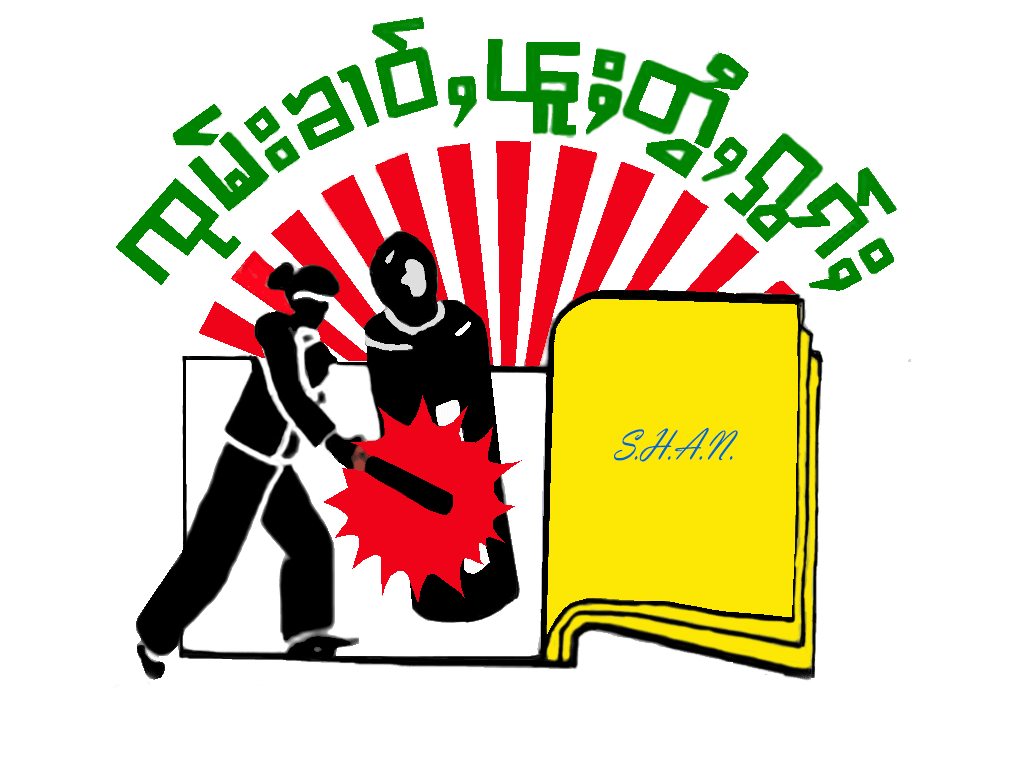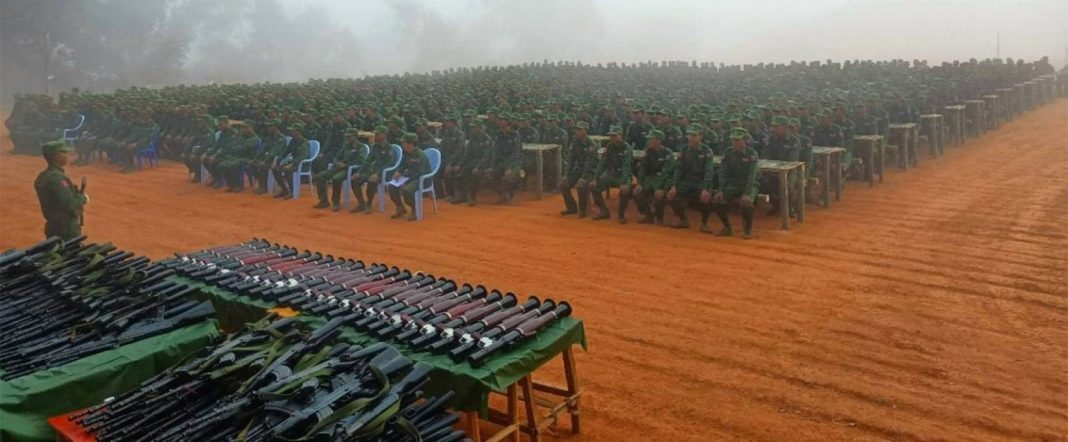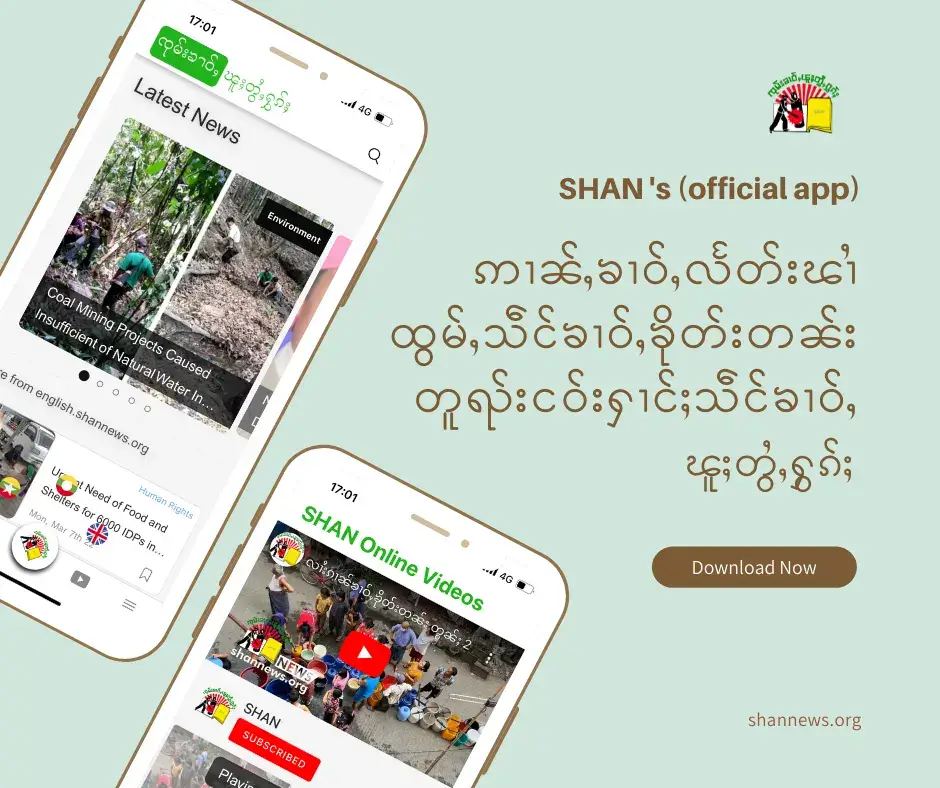In the aftermath of the 1027 Operation launched by the Three Brotherhood Alliance (3BHA), of which Arakan Army (AA), Ta’ang National Liberation Army (TNLA) and Kokang or Myanmar National Democratic Alliance Army (MNDAA) are members, in northern Shan State has changed from original, political goal-setting of uprooting the military junta and establishment of federal democratic union to narrow ethno-nationalism, with area expansionism as the main thrust. And the Shan north being a multi-ethnic populated area is now in the midst of simmering inter-ethnic conflict, fueled by contest between different ethnic armed organizations (EAOs) infesting the political landscape.
However, the main EAOs involved in northern Shan State theater are TNLA, MNDAA, Kachin Independence Army (KIA) and Shan State Progress Party/Shan State Army (SSPP/SSA). Although the United Wa State Army (UWSA) isn’t involved in inter-EAO conflict, it nevertheless seems to be profiting because of the 1027 Operation, as Hopang and Panglong towns were handed over to it in January this year, by the 3BHA after the capture of the towns from the Myanmar or Burma Army.
The main area of contest is the Kutkai town in Kutkai township, with Namphakka also mentioned intermittently.
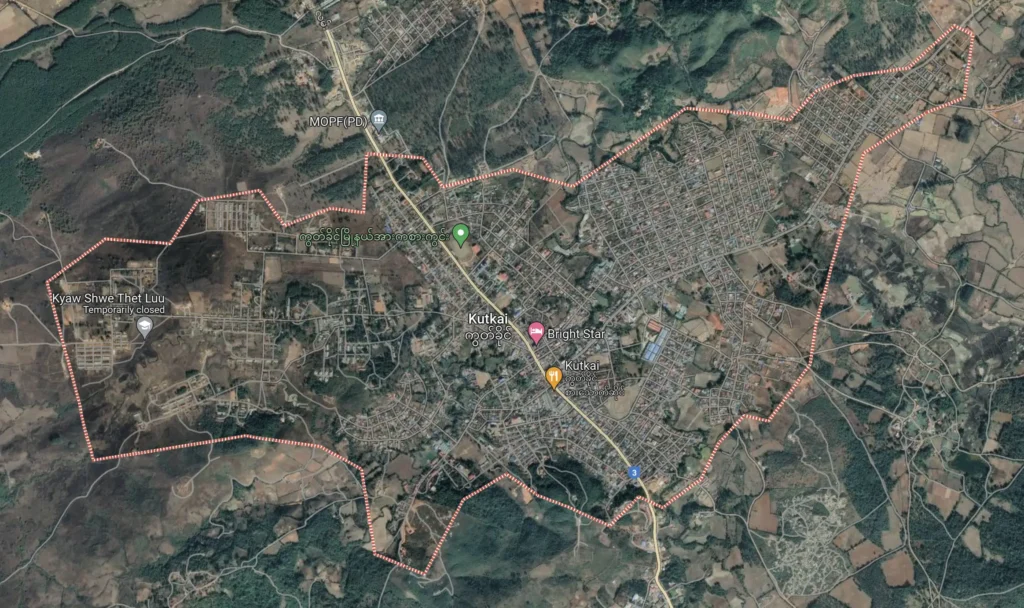
The TNLA has frictions and occasional violent outbreak with the MNDAA, KIA and also the SSPP.
The MNDAA has frictions and violent armed confrontation with the SSPP, but minor clashes and disputes with the TNLA and KIA.
The KIA has frictions with both the MNDAA and TNLA but more confrontation with the latter.
The SSPP has frictions with the TNLA and also minor clashes, while it has serious armed clashes with the MNDAA, which now has been quiet without explanation given from both sides.
Kutkai the epicenter
The clashes and frictions happened overwhelmingly in Kutkai town area between the MNDAA, TNLA and the KIA.
Investigation revealed that there was a military tension between the TNLA and MNDAA, when the former entered the place where the latter was stationed in Kutkai town, without notification. On 27 April at noon, TNLA troops entered and occupied the position of MNDAA stationed at the Agricultural Office at Kaungkha road junction without prior notice, according to the local residents, reports Shan News of 28 April.
In the process the MNDAA arrested at least 5 TNLA soldiers with their guns followed by reinforcement of both groups, according to the locals.
Then during the night at around 11:00 pm., TNLA fired artillery and small weapons unilaterally from within its camp in the west of Kutkai, said the residents. The locals said it may be just to vent their soldiers’ anger for they were unable do anything.
Similarly, on 19 April, near Mohan village-tract between Kutkai and Tamoenye, TNLA and MNDAA came into contact, firing guns as a threat from both sides, without actually shooting at each other, according the the local residents.
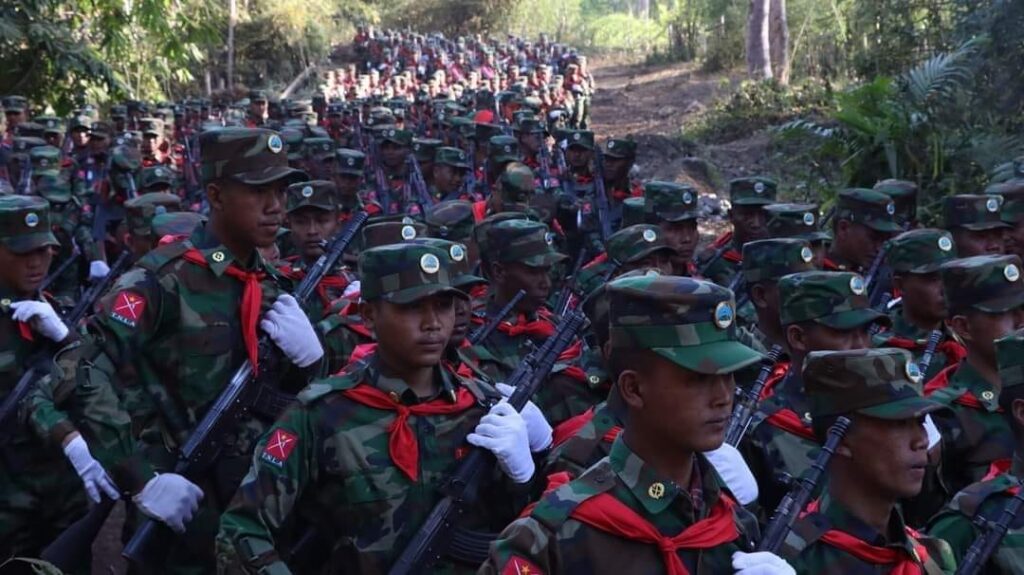
In addition, on 26 April, there was tension at the KIA checkpoint on Union Road at the exit of Namphakka village, Kutkai township, as the MNDAA soldiers beat up and kicked the KIA soldiers, according to local residents, reported the Shan News.
Reporting on the same incident, The Irrawaddy wrote on 28 April that the MNDAA fielding over a hundred troops pressured the 7 TNLA soldiers at the Agriculture Office in Kutkai arresting them and seizing their weapons, according to a local resident.
In the same vein, the MNDAA near the Agriculture Office arrested some 30 TNLA soldiers venturing around the area and also seizing their weapons.
The Irrawaddy contacted the TNLA’s spokesman Lwe Ye Oo on the Kutkai incidence on which he replied that MNDAA and TNLA both sides are trying to negotiate the issue diplomatically and he didn’t know the answer yet, according to the report.
After the 1027 Operation MNDAA stationed its troops in at least five administrative offices and has been conducting some administration works independently. In the third week of April, the TNLA announced that it will be the sole organization to be responsible for the Kutkai town administration, according to the local sources.
Kutkai town was captured by the TNLA during the 1027 operation from the military junta’s Northeast Regional Command on 8 January and it was the 7th captured city.
The TNLA also repeatedly demanded the KIA to move out of its positions in Kutkai and Namtu towns during the month of April. In addition, the KIA position at Muse district, Nam Om village was also said to be demanded to evacuate.
MNDAA – SSPP clash
According to the SSPP Information Facebook on 27 March, the SSPP/SSA camp in Hsenwi township in northern Shan State was attacked twice by the MNDAA with attack drones.
In the course of the battle, the SSPP/SSA columns that were operating in Hsenwi township between Namsalak and Hse-O village-tracts near Kung Nyaung village were attacked by the MNDAA forces for ten minutes with drones, on 26 March, at about 3:00 pm.
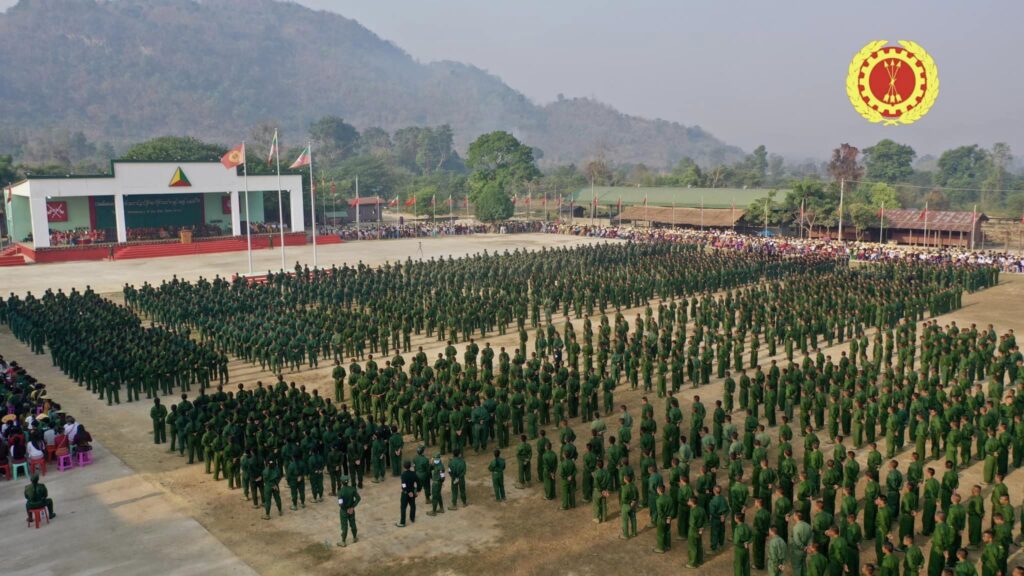
Again, on 27 March, at 9:00 am., from a field near Panna village in Hse-O village-tract, MNDAA troops bombed a nearby SSPP/SSA special military camp for more than 50 times using drones. After 11:00 am., more than 200 ground troops attacked the SSPP/SSA camp again, and the two sides fought until past 12:00 in the afternoon.
Although SSPP was attacked in its original Shan-dominated stomping ground by the MNDAA it still said in its statement after the clashes that it was ready for peaceful negotiation.
However, the fighting died down shortly after but no party comes up with an explanation until now and the issue remains unresolved. Probably both might have called a truce on territorial dispute and choose not to publicize as has been the case with the EAOs among themselves in general.
“Now, when the northern Shan State areas are starting to jointly administered the captured territories (which aren’t completely and clearly under their complete control, as other EAOs are also present and overlapping in control) by the Northern Alliance forces (actually it means 3BHA and the UWSA). Local taxation and recruitment were also found to be increasing. During the 1027 Operation, more than 3,000 civilians from various parts of Burma who returned from Laukkai city due to the fighting were arbitrarily arrested and forcibly recruited by the MNDAA’s 9th Army at the exit of 10th Ton Gate and Parsenjaw. After the basic military training of about three months in the Hopang area, from the first week of this month in April, the recruits were sent to Hsenwi, Lashio townships, Mantong and Mong Ko regions to expand and control the areas, according to a military analysis organization of the region,” writes the Kachin Sub-State Media (KSSM) on 27 April in its analysis piece.
Local population’s multitude sufferings
Originally from the outset the 1027 Operation was aimed at replacing the military junta by installing federal democratic union for all the peoples of Burma. But shortly after the end of the 3BHA’s operation, which lasted a little more than three months, by the Haigeng Agreement brokered by China, on 12 January 2024, it showed the real nature of their motives, which are territorial expansion and implementation of narrow ethno-nationalism to promote racial supremacy doctrine upon other ethnic groups different to the individual militarily dominant ethnic army group calling the shots.
With it comes increase taxation, including forced recruitment of the population into the armies of EAO. Moreover, cultural insensitivity and natural resources extraction have also irked the locals to the very extreme.
In Lashio city, where the Military Council’s Northeast Military Command is based, armed organizations like SSPP, KIA, TNLA, including the Military Council are present, Lashio residents are carrying a huge burden in trying to meet the daily increased taxation payment, said the locals.
“Paying taxes to the military council and other armed organizations is a huge burden for the people during this tight political and economic situation. The relevant groups should carefully coordinate with each other and think about relief for the people. The military council has to be paid as much as they ask for also, and if the people still have to pay all the taxation demands from other armed groups, the people will just have to die,” wrote a trader from Lashio in his remark (possibly in response to questions asked),” writes KSSM in its recent report on 27 April.
Concerning forced recruitment it has been an ongoing process by all EAOs in Shan State for years. Thus the SSPP, KIA, TNLA are all in it and now the military junta has joined in also by promulgating the forced conscription law within the whole country. It seems the population in the northern Shan State has nowhere to run or hide from such oppression.
In Mong Ko, Muse district, on 22 April, the MNDAA rejected the building of a Manaw hall for Manaw festival occasion, although the locals has asked for permission on 17 April from the MNDAA and KIA authorities which jointly administer the town. This cultural insensitivity could lead to hatred of each other said the locals, according to the KSSM on its 25 April report.
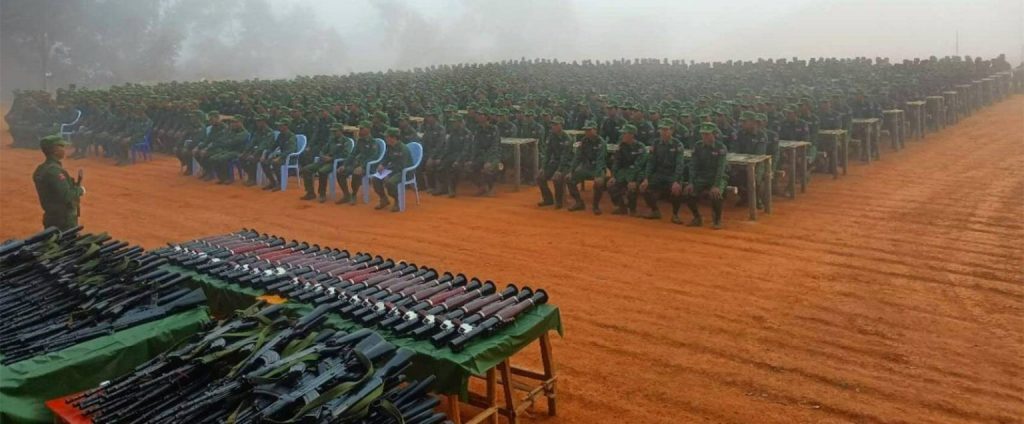
In December 2023 MNDAA forcibly disrobed Buddhist novices and monks and recruited them as soldiers against their will.
In February 2024, MNDAA opened gambling facilities at Manaw ground in Mong Ko without discussion with the Kachin Literature and Culture organizations of the town’s people, writes the same report.
The local people also protested against the gold mining by MNDAA which was undertaken without the permission and consent of the local people in Kutkai township. A local resident told KSSM news agency that more than 100 local residents of Manjel and Nong Kham villages, Monya village-tract, Kutkai township, protested against the MNDAA forces, which were gold mining in Nam Say stream on April 24, from 9:30 to 11:00 in the morning, according to KSSM report of 24 April.
“MNDAA teams have started digging for gold in Nam Say stream, which is the main source of drinking water and water for the fields of Manjel and Nong Kham villages since April 17, 2024. You can’t dig for gold in these places. If you dig, the water stream pattern will be destroyed. The fields won’t be able to be cultivated and drinking water source will also be depleted. In addition to not accepting it, the owners of the farms are being pressured to sell their land so that they can dig for gold. That’s why we, the local people, gathered and showed our opposition in front of the MNDAA office in Manjel,” said Monya resident U Wan Ta-joon (name changed for security reasons).
The KIA Brigade10 Battalion 2 officials were informed to persuade the MNDAA officers to respect the public opinion and stop the digging, which they did. But the MNDAA Brigade Commander Li Kyint Mauk refused and said that it is just following orders from above and continue digging.
On 23 April 2024 at around 6:20 in the morning, it was further learned that the MNDAA forces fired 2 rounds 60 mm mortar to threaten the local people near Nam Say stream where gold was being mined.
Analysis
Looking at all the episodes unfolding since the end of 1027 Operation, generally speaking, the inter-ethnic conflict is brewing and inter-EAO conflict is on the march in northern Shan State. Together with this development, identity politics and the emergence of narrow ethno-nationalism become more pronounced which no one has an answer on how to coup with them.
As we can see, the 3BHA, especially the TNLA and MNDAA, have no qualms in indulging in area expansionism at the expense of the original populace and dwell on racial supremacy doctrine in order to satisfy their egos and carve out a larger self-administered political entity for better future bargaining position. In other words, both are expanding their territories with the argument that if you can push out the military junta from a place, that place belongs to you.
They failed to recognize that all territories have original local owners and their consent on how they should be treated and administered are crucial and most important. In a way, the existing political demarcation or mapping has still to be honored even though they may not be according to one party’s wish and one can’t just redraw the boundary according to one’s liking unilaterally. It is not that the redrawing of political map has to be rejected but all stakeholders and parties have to wait until a set of criteria, rules and regulations are agreed upon by all and incorporated in a to be drawn federal democratic union constitution. And this can only be done when the country is at peace and the military junta out of the political arena.
A question may well be asked on what can be done during this transitional period?
The simple answer will be that all EAOs should be the caretaker administrators in their respective areas with the consent of the local people and wait for the right time of countrywide political map redrawing, including the creation of more federal and local units according to the needs and values of the local people.
In a nutshell, the identity politics, creation of new federal units, curbing narrow ethno-nationalism, building common state-level and union-level national identities, promoting “unity in diversity” norms, building multi-ethnic state harmony within the mold of federal democratic union and so on, can only be realized with patience, commitment, determination and most importantly, an all accepted new political mapping procedure guided by criteria, regulations and principles embedded in the constitution that all can identify with.
